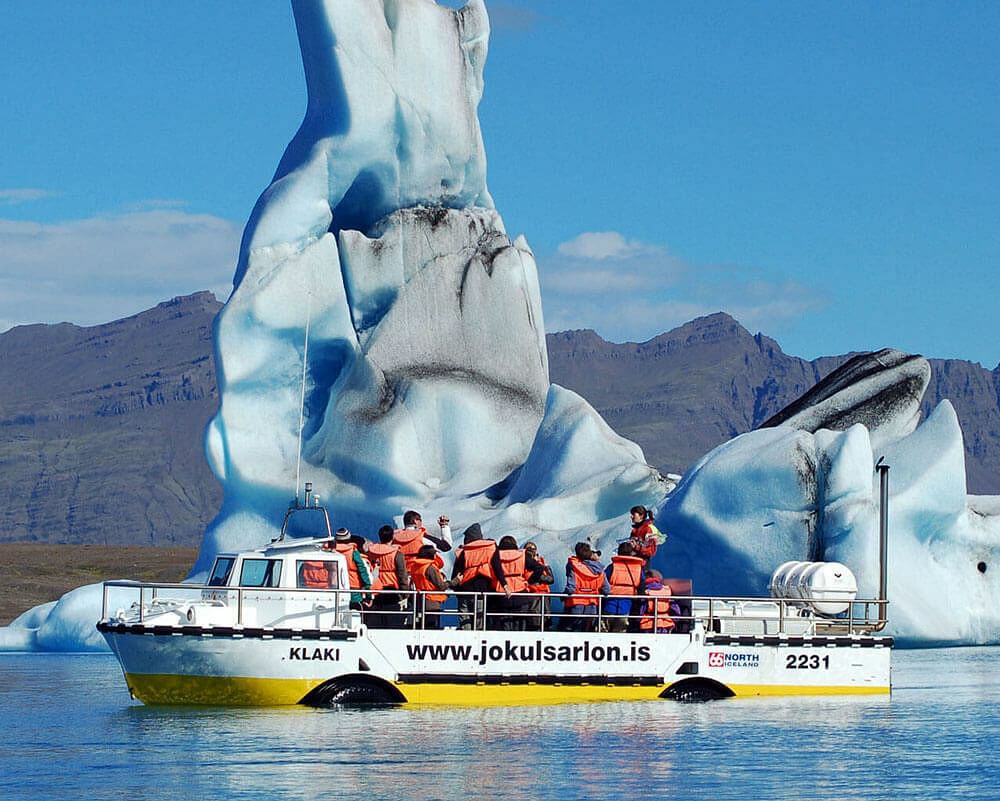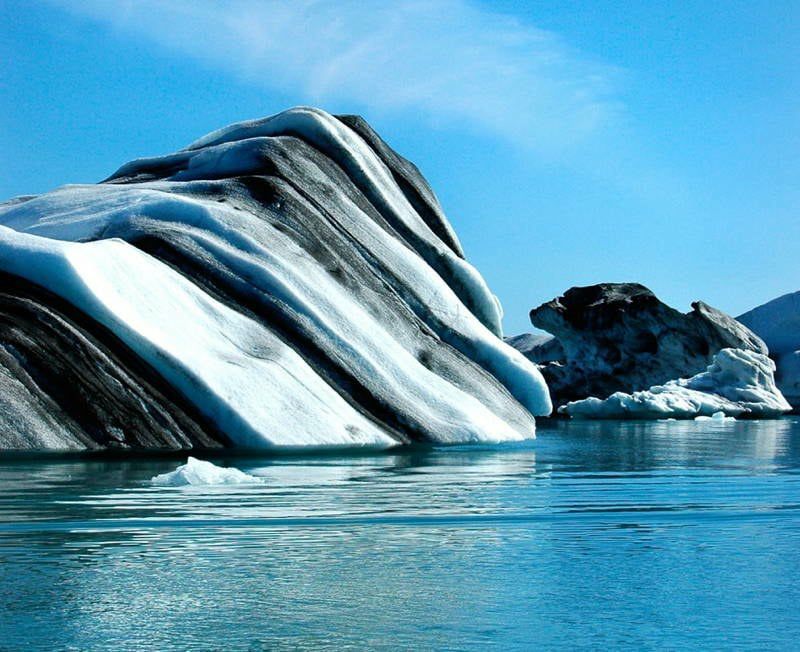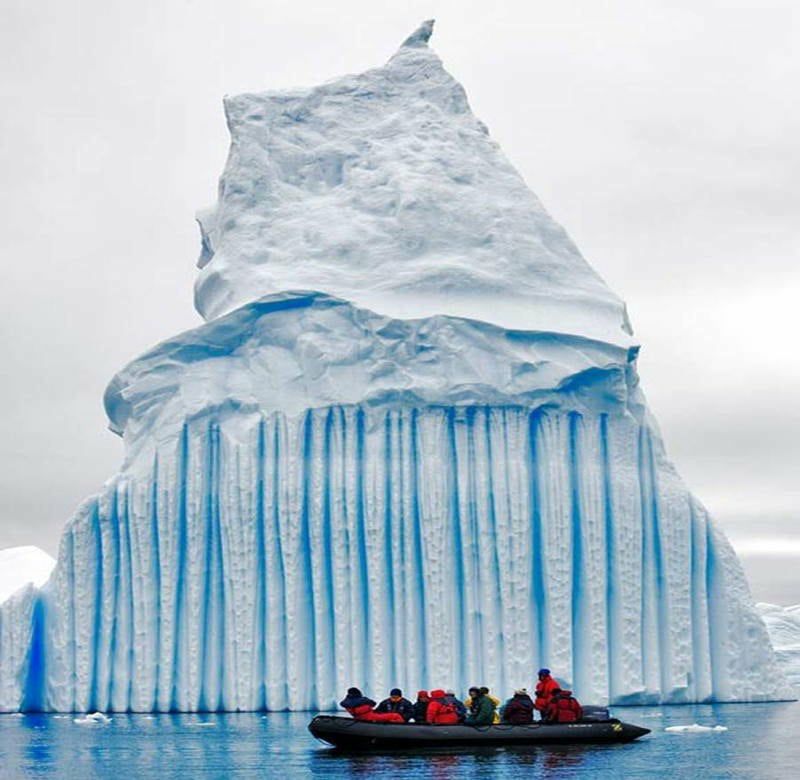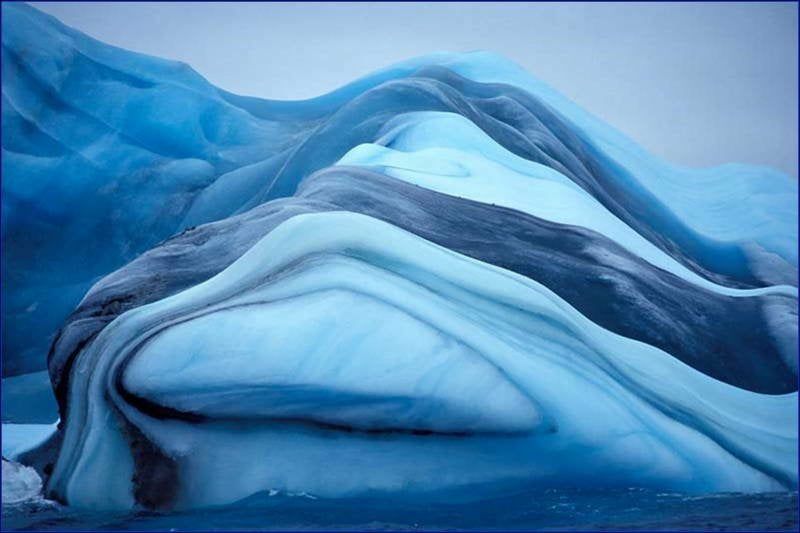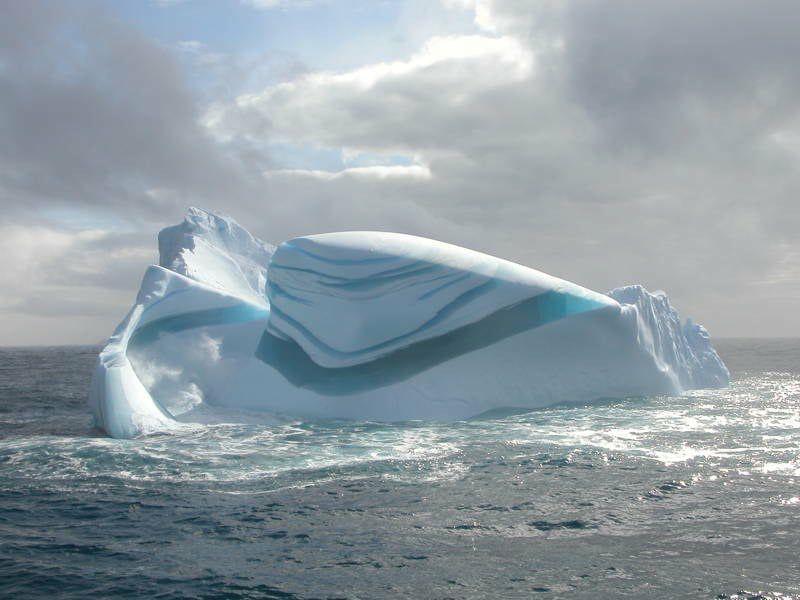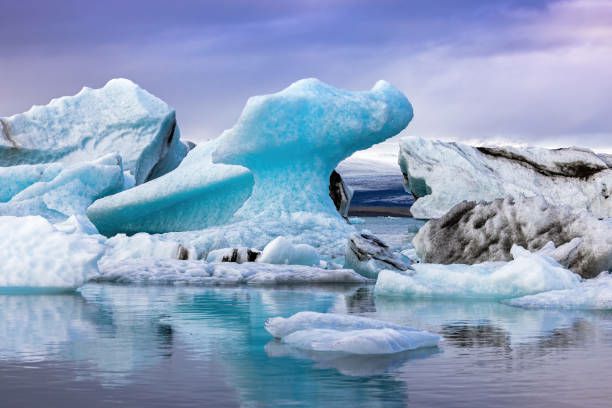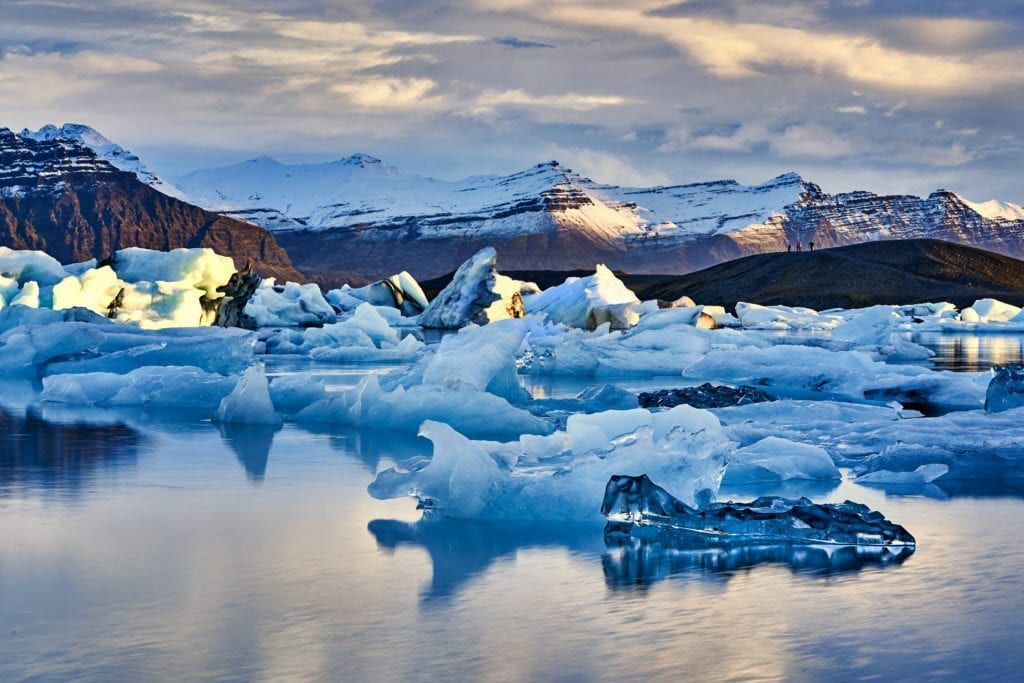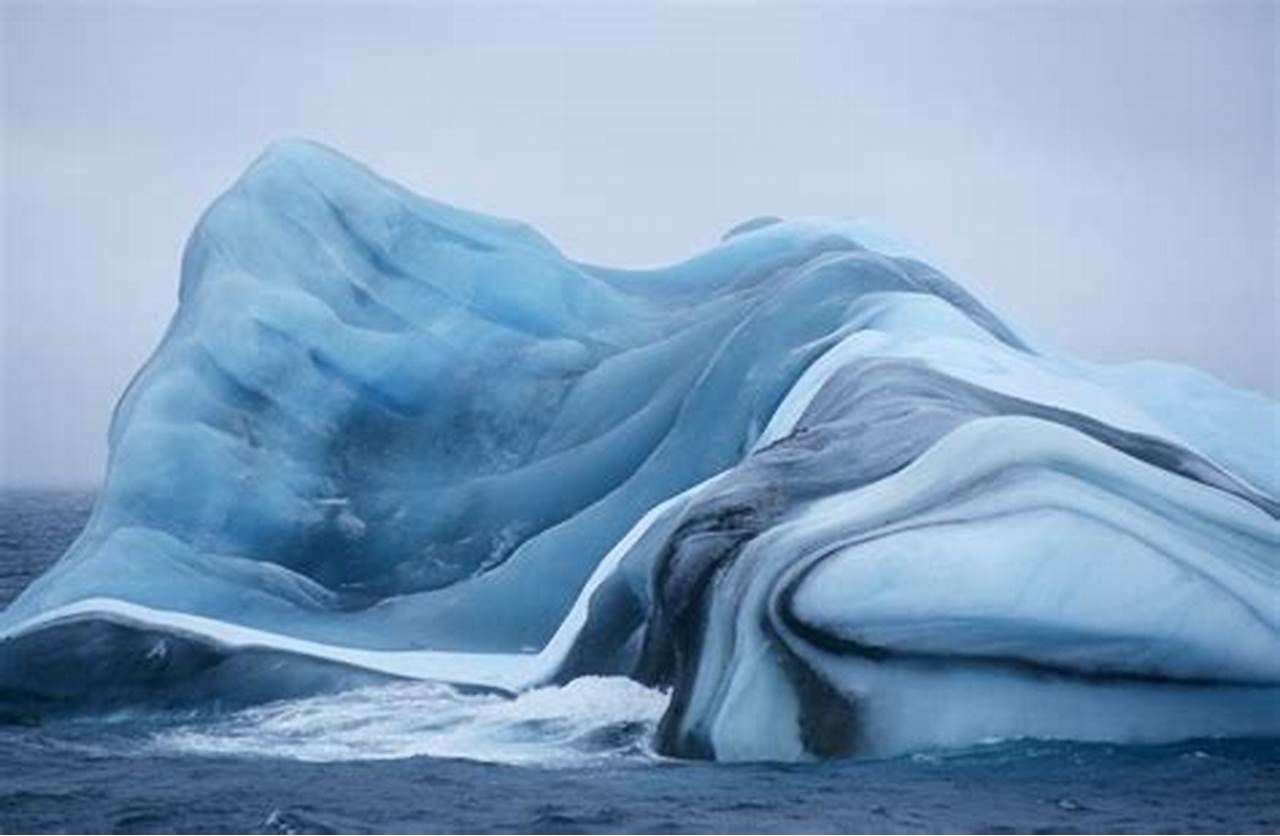Antarctica’s magnificent striped icebergs resemble nature’s candy.
The sight of dead krill and trapped sediment on ice may seem unusual, but it possesses a unique beauty in its own right. The candy-striped icebergs, often found approximately 1,700 miles south of Cape Town, are a result of a fascinating natural process involving ice crystals forming beneath an iceberg and rising to its bottom. Inevitably, this process traps dark-colored sediment and krill within the ice, creating a captivating visual spectacle.
The formation of candy-striped icebergs begins with the freezing of seawater. As the ice crystals form, they can incorporate sediment and organic matter present in the water column. Krill, tiny marine crustaceans, are a common prey for many marine animals and can often be found in large numbers in certain regions. When trapped within the ice, the krill and sediment become suspended in the frozen matrix, creating striking patterns and colors.
The result is a mesmerizing combination of white ice, streaked or speckled with contrasting hues of brown, black, or reddish-brown. The candy-striped appearance of these icebergs captures the imagination and draws attention to the intricate processes occurring within the icy realms of the ocean.
These unique icebergs often captivate researchers, photographers, and nature enthusiasts who are fascinated by their striking visual appeal. They serve as a reminder of the diverse and interconnected ecosystems present in our oceans, where even the smallest organisms can leave their mark on the frozen landscape.
Beyond their aesthetic appeal, candy-striped icebergs also have scientific significance. The trapped sediment and krill within the ice provide valuable insights into the local marine ecosystem. Researchers can study the composition of the sediment and analyze the krill populations, gaining a deeper understanding of the dynamics and health of the surrounding environment.
While the sight of dead krill and trapped sediment on ice may evoke mixed emotions, it highlights the delicate balance and intricate interplay between life and death in nature. These icebergs are a testament to the resilience and adaptability of marine life, showcasing their ability to survive and leave traces even in the most unexpected places.
Ultimately, the beauty of candy-striped icebergs lies in their unique and ephemeral nature. They offer us a glimpse into the fascinating and often unseen wonders of the natural world, reminding us of the profound connections between the elements of earth, water, and life.
Hits: 0
